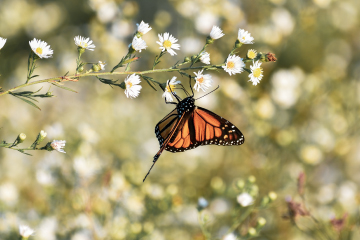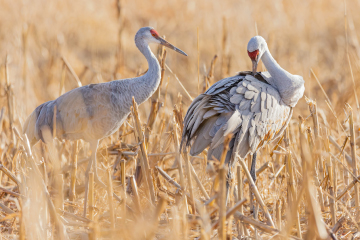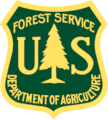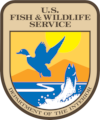Revised RWBJV Landbird Plan is Now Available
According to a recent report, 3 billion birds have disappeared from the landscape over that past 50 years. The report has brought attention to the plight of grassland birds, in particular, whose populations have dropped by half. Habitats in the Rainwater Basin Joint Venture region support millions of grassland birds during the breeding season. Considering the recent information that has come to light, we decided to revise our RWBJV Landbird Plan to help our partners better understand the scope and scale of landbird conservation needs.
We selected 23 priority landbird species, setting population objectives for 8 species with the highest level of concern. Because this plan supports and supplements the continental Partners in Flight Landbird Conservation Plan, we adapted population goals and objectives directly from their 2016 revision. We then estimated the amount of grassland habitat that would be needed to reverse or stabilize population declines for our grassland planning species.
A panel of experts was polled to help identify the top threats impacting our 23 priority species. Although over a dozen threats were recognized as impacting landbirds, conversion to agriculture and woody encroachment were found to have the most significant negative effects. Figuring out which threats are causing population declines or preventing growth helped us to select conservation strategies that will be most effective. For example, we were able to determine that, if current rates of conversion to agriculture continue for grassland, we will have a shortage of 1.5 million acres of habitat in 30 years. Based on this information, we can estimate the number of acres of grassland that we will need to prevent from conversion or restore via government conservation programs or other incentives. We can also project that the cost to address conversion is approximate $19 million per year, with the costs of preventing woody encroachment exceeding $4 million each year.
The plan revision also describes methods we can use to target regions, or even specific locations, that support high numbers and diversity of birds. Using these methods, partners can get the biggest bang for their conservation buck by identifying eligible properties where habitat work will benefit one or more priority species. This approach can be applied at a variety of scales and geographies, customized for each partner, for greatest flexibility.
We hope this plan provides the information and inspiration our partnership needs to implement both long-term planning and immediate actions that will ultimately help recover vulnerable species and halt continued declines of more common species as well. This work would not have been possible without the expertise and dedication of our Landbird Plan Writing Team. Members include Joel Jorgensen (NGPC), Sarah Nevison (NGPC), TJ Walker (NGPC), Orien Richmond (USFWS), Scott Somershoe (USFWS), Jim Dubovsky (USFWS retired), Jeff Drahota (USFWS), Chris Helzer (Nature Conservancy), and Kaylan Kemink (Ducks Unlimited). The revised Landbird Plan is available here.
















